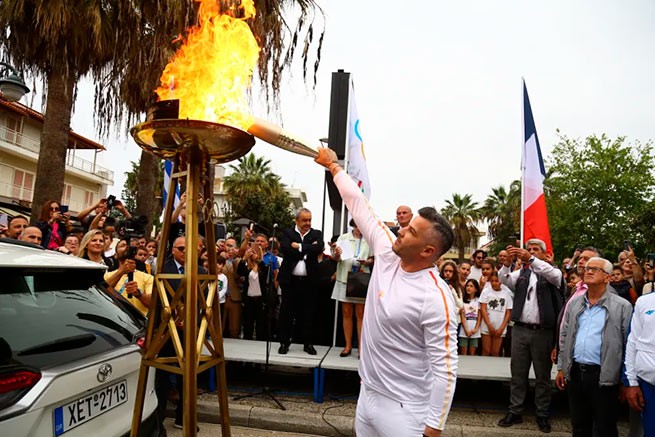An inexplicable natural phenomenon, the waters of the Geropotamos River, which turned red, alerted the inhabitants of the surroundings, who say that it is very “like blood.”
In Messara, Crete, along the banks of the river, there are ecologists who are trying to find out the reason for such a rare phenomenon.
Residents of the village of Moira claim that an unpleasant smell comes from the reservoir, besides, the color of the water clearly resembles blood, according to the local newspaper ekriti.
Local media contacted the mayor of Phaistos, Grigoris Nikolidakis, who sent reporters to the Port Services Administration (Λιμεναρχείο), where, however, they were denied assistance in investigative journalism.
It is worth noting that Moira has a municipal slaughterhouse that may be responsible for water pollution.
According to ekriti, the issue is currently being handled by the regional environmental department. Most likely, as experts suggest, this is just the spread in the waters of a rare type of seaweed that has a red color with a putrid odor.
This has been observed many times in Thermaikos Gulf, Thessaloniki. The version is checked by specialists.
And no further than a couple of years ago, “purple bacteria” (microscopic algae) were seen by the inhabitants of Nafplion (Peloponnese).
As reported, on Saturday, February 16, 2019, passers-by walking along the embankment could observe an impressive natural phenomenon. The seabed, exposed at low tide, took on a bloody color.
The low tide in Nafplio was so massive that a local amateur fisherman joked that “even on foot you can walk to Bourtzi”, the area of the seabed at low tide was so large. Only a small piece of the sea separated the land from the famous naval castle.
At the same time, the exposed seabed acquired an intense purple color, as if “drenched in blood.” This natural phenomenon occurs quite rarely. This time, due to the Super Full Moon, the ebb was so spectacular. And the appearance of purple bacteria only added “mysteriousness” to the phenomenon and “caught up fear” on the townspeople.
However, environmentalists immediately warned: the reddened seashore is absolutely not dangerous for people. Under the mud / dense cover of algae, instead of oxygen, hydrogen sulfide was formed, where this type of bacteria successfully multiplies. Experts say that micro-organisms thereby “help” to clean this area of the sea from pollution.
The low tide in Nafplio was so massive that a local amateur fisherman joked that “even on foot you can walk to Bourtzi”, the area of the seabed at low tide was so large. Only a small piece of the sea separated the land from the famous naval castle.
At the same time, the exposed seabed acquired an intense purple color, as if “drenched in blood.” This natural phenomenon occurs quite rarely. This time, due to the Super Full Moon, the ebb was so spectacular. And the appearance of purple bacteria only added “mysteriousness” to the phenomenon and “caught up fear” on the townspeople.
However, environmentalists immediately warned: the reddened seashore is absolutely not dangerous for people. Under the mud / dense cover of algae, instead of oxygen, hydrogen sulfide was formed, where this type of bacteria successfully multiplies. Experts say that micro-organisms thereby “help” to clean this area of the sea from pollution.






More Stories
D. Sariyannis: “We expect African dust in mid-May”
"Mosquitoes" diseases are spreading across Europe and have reached Crimea
Orange sky…